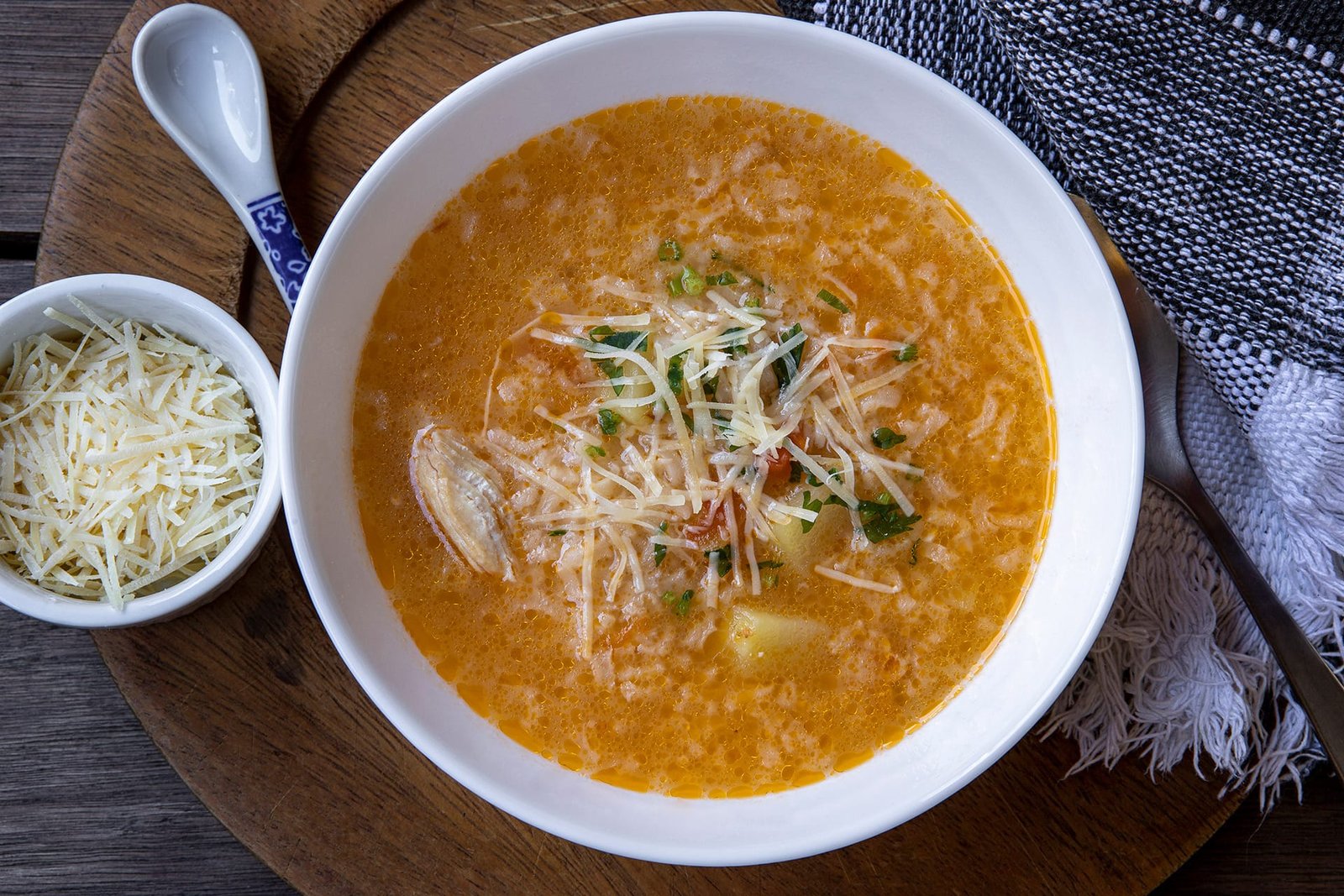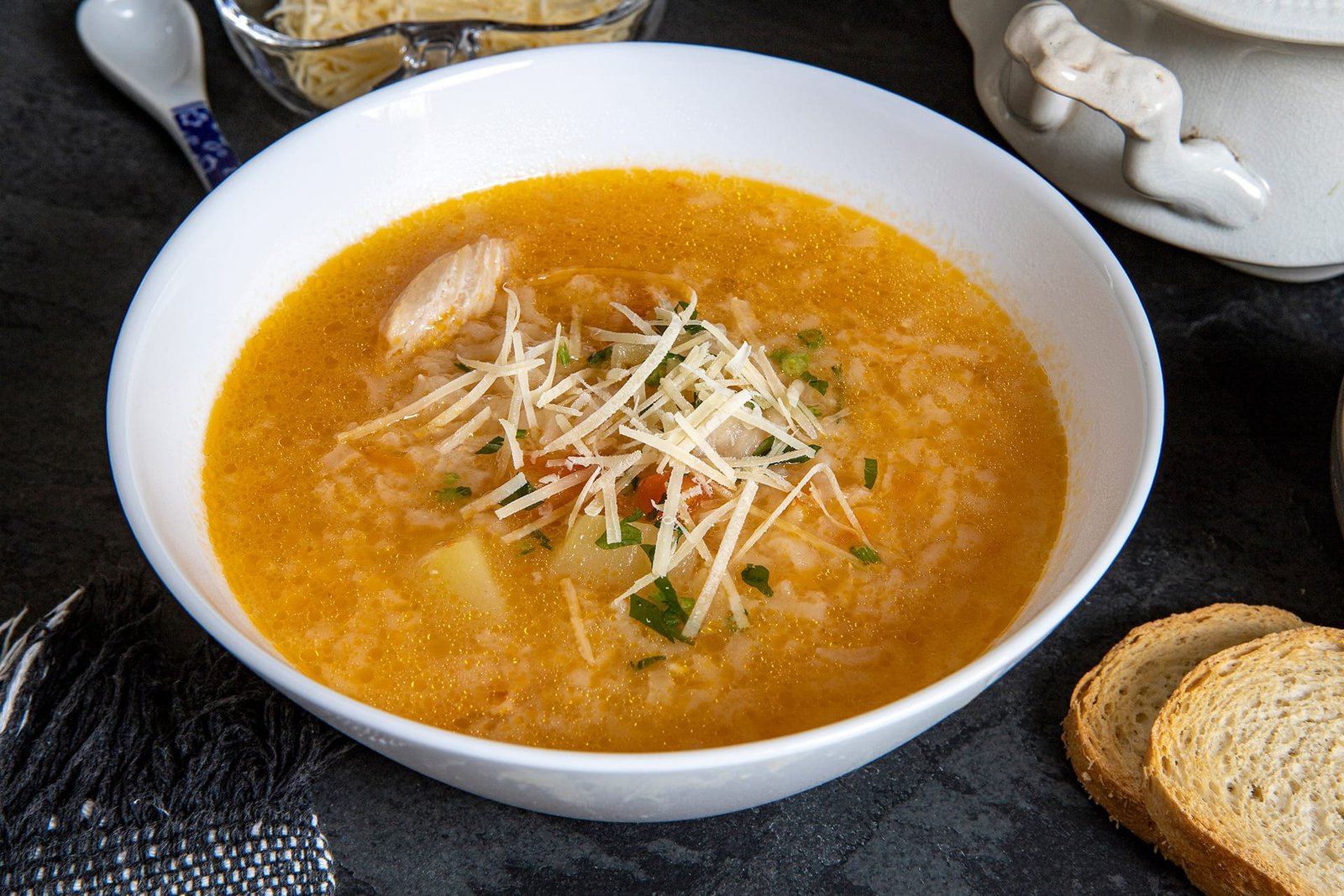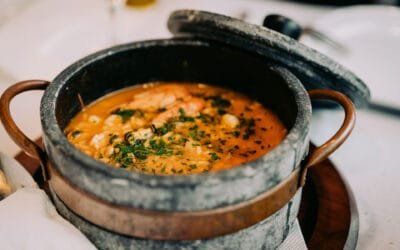Canja de Galinha: The Rich and Delicious Chicken Soup (Video)

There are dishes that nourish the body, and then there are dishes that nourish the soul. In Cape Verde, canja de galinha does both. This rich, comforting chicken soup — thicker than a broth, lighter than a stew — is found simmering in kitchens from Santiago to Santo Antão. But it’s not just a meal. It’s a tradition. It’s what your mother brings when you’re ill, what’s served quietly after funerals, and what welcomes the New Year in many Cape Verdean homes.
Simple in ingredients, deep in meaning, canja is one of the most iconic and beloved dishes in the archipelago.
How to Make Cape Verdean Canja at Home: Step-by-Step Guide
You don’t need fancy equipment or exotic ingredients. The beauty of canja lies in its simplicity.
Clean and season your chicken — traditionally with garlic, salt, and lemon or vinegar.
Sauté the onion and garlic in oil, then add the chicken and cook it until slightly browned.
Cover with water and simmer until the chicken is tender and cooked through.
Add washed rice and any optional vegetables.
Cook gently until the rice is soft and the soup thickens naturally.
Finish with parsley, lemon, and season to taste with pepper.
Your canja is ready to serve. Bom apetite!
Every household tweaks the method: some remove the chicken to shred it before returning it to the pot, while others boil the rice separately. Some let the soup rest for a few hours to deepen the flavour. However, the key remains the same: cook slowly and with care.
If you are looking for a canja recipe, you will easily find many versions of this tasty soup. Here are links to some other nice recipes:
- Cape Verdean Chicken Soup (+video) on We tThe PCOS blog;
- Canja – Cape Verdean chicken soup recipe on Crumb Snatched blog;
- Canja de galinha recipe – Brazilian chicken and rice soup on Brazilian Kitchen Abroad blog;
- Chicken and rice soup (canja de galinha) on Easy and Delish blog;
How to make Canja de Galinha by Sabores de Criola
What Makes Cape Verdean Canja Unique?
While many countries boast a version of chicken soup, Cape Verdean canja stands out for its texture and soulfulness. It’s not watery. It’s not overly spiced. The soup is thick and velvety, with broken grains of rice absorbing both the broth and the essence of the chicken. The meat is often left bone-in, simmered for hours until tender enough to shred with a spoon.
You’ll often find:
-
Onion and garlic, sautéed until golden.
-
A touch of paprika, giving the soup a subtle colour and warmth.
-
Rice — medium grain is preferred — for body.
-
Occasionally, carrots, potatoes, parsley, and green pepper, depending on what’s on hand.
-
A squeeze of lemon at the end, especially when served for health.
And while it’s usually served as-is, some households like to finish it with a drizzle of olive oil, a crack of black pepper, or a dash of Cape Verdean hot sauce (the kind that reminds you you’re alive).
Canja de Galinha: A Soup with Roots in the Past
Canja de galinha traces its lineage back to Portuguese cuisine, where “canja” refers to a light chicken soup often made with rice or small pasta. From there, it travelled to Brazil and the former colonies, each region adapting it with local ingredients and traditions. In Cape Verde, it evolved into something altogether more robust — a thick, rice-heavy dish, fragrant with garlic, onions, pepper and occasionally tomato, potato or carrot.
It became a national comfort food, but more than that, it became a ceremonial meal, often served at significant life events. The association of canja with care and continuity is strong. You eat it when you’re sick. You serve it at vigils. You cook it in large pots for family gatherings. It’s one of those dishes that tastes like memory.

A Dish of Healing and Hospitality
Ask any Cape Verdean and they’ll tell you: canja is not just food — it’s medicine. It’s the first thing you get offered when you’re sick. It soothes the throat, fills the stomach, and warms the body. But it’s also the dish of care. It’s what gets prepared when someone passes away, served to mourners in quiet respect. It’s what’s eaten during the long hours between death and burial, when words are few and comfort is needed.
On the lighter side, canja is also served to celebrate. Some families eat it at midnight on New Year’s Eve, a humble counterpoint to fireworks and festivities. Others might serve it after baptisms or birthdays—any moment when people gather.
Its versatility and symbolism make it one of those rare meals that transcends class, island, and age. Whether rich or poor, young or old, everyone eats canja. And more importantly, everyone has a version of it.
Good Canja Soup
In an age of fast food and instant gratification, canja reminds us of the value of time — the kind of time you spend stirring a pot, checking for salt, calling your aunt for her version of the recipe. It’s about patience. It’s about care. It’s about sharing.
For Cape Verdeans at home and abroad, canja is an edible anchor. When cooked abroad, it brings a taste of home. When served at a wake, it binds people in grief. When eaten with friends, it says: You belong here.
So next time you’re in Cape Verde — or your kitchen with some rice and chicken — consider making a pot of canja. Don’t rush. Let it simmer. Let the smell fill your home. And when it’s ready, eat it slowly.
Check out also:
Bibliography / Sourdes
- Canja de galinha – Cape Verdean chicken soup recipe on Crumb Snatched;
- Canja de galinha on Wikipedia, The Free Encyclopedia;







